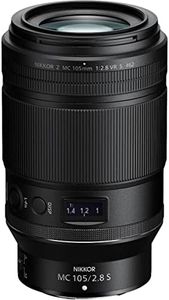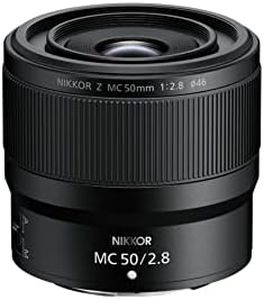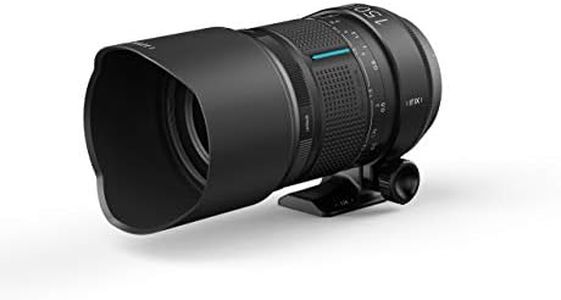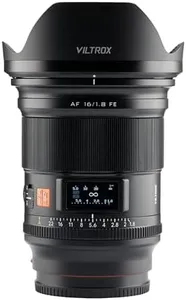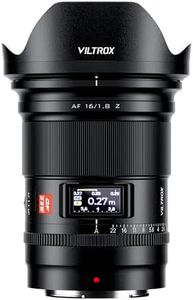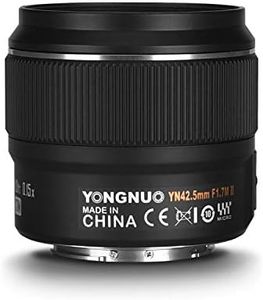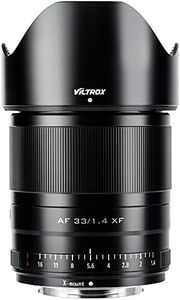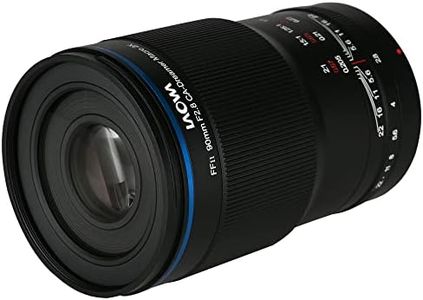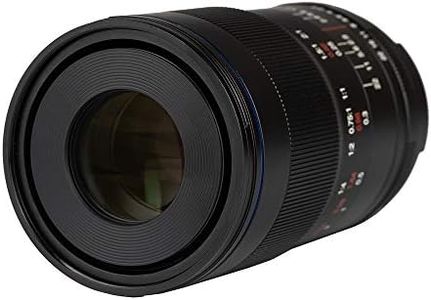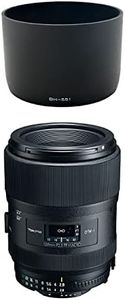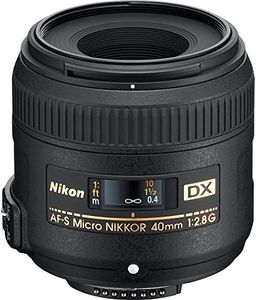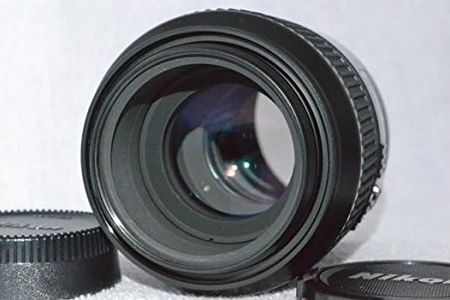10 Best Nikon Macro Lenses 2025 in the United States
Our technology thoroughly searches through the online shopping world, reviewing hundreds of sites. We then process and analyze this information, updating in real-time to bring you the latest top-rated products. This way, you always get the best and most current options available.

Our Top Picks
Winner
Nikon NIKKOR Z MC 105mm f/2.8 VR S | Professional macro prime lens for Z series mirrorless cameras | Nikon USA Model
Most important from
371 reviews
The Nikon NIKKOR Z MC 105mm f/2.8 VR S is an impressive macro lens designed for Nikon's Z series mirrorless cameras, making it a great choice for anyone serious about macro photography. One of its standout features is the ability to achieve life-size 1:1 magnification, allowing photographers to capture extraordinary details in subjects like insects or flowers. This lens boasts advanced S-Line optics, ensuring sharpness and minimal distortion, which is crucial for macro work where precision matters.
With a bright maximum aperture of f/2.8, you can take stunning shots even in lower light conditions, while also utilizing a shallow depth of field to isolate your subjects against beautifully blurred backgrounds. The 105mm focal length provides a comfortable working distance, so you can photograph your subjects without scaring them away.
Another strength is the Vibration Reduction (VR) feature, which helps to reduce camera shake. This is especially beneficial when shooting handheld, as macro photography often requires steady hands. Additionally, the lens is weather-sealed, protecting it from moisture and dust, allowing for more versatile outdoor usage. The weight of the lens at 1.39 pounds might be a concern for some users, especially those who prefer lightweight gear for handheld shooting over extended periods. While this lens excels in macro photography, it can also be used effectively for portraits, though it may not be the most versatile option for a wider range of photography styles. The Nikon NIKKOR Z MC 105mm f/2.8 VR S is ideal for enthusiasts and professionals focused on macro and portrait photography, delivering outstanding image quality and usability.
Most important from
371 reviews
Laowa 24mm f/14 Macro Probe Lens for Nikon
Most important from
11 reviews
The Laowa 24mm f/14 Macro Probe Lens stands out in the macro lens category, particularly for photographers seeking unique perspectives and extreme close-ups. Its 24mm focal length allows you to capture intricate details, which is essential for macro work. The maximum aperture of f/14 offers decent light control, although it may not be the brightest option available, meaning you might need to use longer exposure times or higher ISO settings in dimmer conditions.
One of the standout features is its impressive magnification ratio, which allows for stunning close-up shots. This lens can capture subjects at a 2:1 magnification, making it ideal for photographing small subjects like insects or flowers. It lacks image stabilization, which might pose challenges when shooting in hand-held scenarios, especially at extreme close distances where even minor shakes can disrupt detail.
In terms of autofocus speed and accuracy, this lens primarily relies on manual focus, which can be a drawback for some users who prefer quick adjustments. Nevertheless, many macro photographers appreciate the control that manual focusing provides, especially for precision work. The build quality is robust, designed to withstand the rigors of outdoor use, and it does have some weather sealing, which offers peace of mind when shooting in less-than-ideal conditions. Its weight of 5.35 pounds may be cumbersome for extended use, especially for those who prioritize portability.
This lens is a fantastic choice for dedicated macro photographers who want to achieve remarkable detail in their images. Those who favor ease of use, autofocus features, or a lighter lens might want to consider other options. If you’re serious about macro photography and appreciate the tangible benefits of manual focus, this lens could be a valuable addition to your kit.
Most important from
11 reviews
Nikon NIKKOR Z MC 50mm f/2.8 | Compact macro prime lens for Z series mirrorless cameras | Nikon USA Model
Most important from
56 reviews
The Nikon NIKKOR Z MC 50mm f/2.8 is a compact macro lens designed specifically for Nikon's Z series mirrorless cameras. One of its standout features is the 1:1 magnification ratio, allowing photographers to capture intricate details in life size, which is ideal for macro photography. The maximum aperture of f/2.8 offers versatility in different lighting conditions and helps create a pleasing background blur, making your subjects pop. The 50mm focal length provides a natural perspective, making it suitable not just for macro shots, but also for everyday photography like food or portrait shots.
The lens is lightweight and compact, which is a significant plus for those who want to carry it around without feeling burdened. Its front-focusing mechanism helps minimize the size, making it convenient to keep on your camera at all times. This feature is especially appealing for hobbyists and casual photographers looking for a reliable lens that excels in various situations.
There are a few drawbacks to consider. While the autofocus is generally fast and accurate, some users may find it slightly less responsive in low-light conditions compared to higher-end models. Additionally, while the build quality is good, it may not have the extensive weather sealing found in more premium lenses, which could be a concern for photographers shooting in challenging environmental conditions. The Nikon NIKKOR Z MC 50mm f/2.8 is a fantastic choice for those interested in macro photography as well as versatile everyday shooting. Its strengths lie in its compact design, impressive magnification, and bright aperture, although some may want to consider its autofocus performance and build quality in harsher environments. It’s a solid option for enthusiasts and everyday users alike.
Most important from
56 reviews
Buying Guide for the Best Nikon Macro Lenses
Choosing the right macro lens for your Nikon camera can significantly enhance your close-up photography, allowing you to capture intricate details with stunning clarity. When selecting a macro lens, it's important to consider several key specifications that will impact your photography experience. Understanding these specs will help you make an informed decision and find the best fit for your needs.FAQ
Most Popular Categories Right Now
